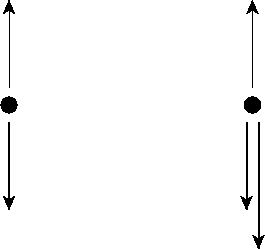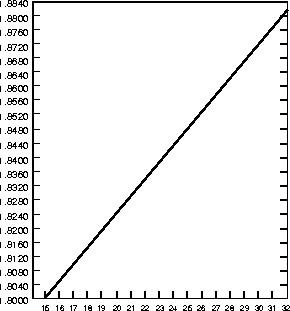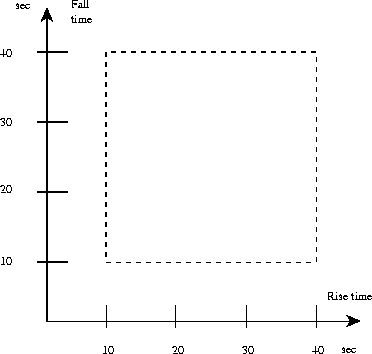
The charge of the electron is measured using the classic technique of Millikan.
Measurements are made of the rise and fall times of oil drops illuminated by
light from a Helium-Neon laser. A radioactive source is used to enhance the
probability that a given drop will change its charge during observation. The
emphasis of the experiment is to make an accurate measurement with a full
analysis of statistical and systematic errors.
Introduction
Robert A. Millikan performed a set of experiments which gave two important
results:
Of these two results, the first is the most significant since it makes an absolute assertion about the nature of matter. We now recognize e as the elementary charge carried by the electron and other elementary particles. More precise measurements have given the value
|
The electric charge carried by a particle may be calculated by measuring the force experienced by the particle in an electric field of known strength. Although it is relatively easy to produce a known electric field, the force exerted by such a field on a particle carrying only one or several excess electrons is very small. For example, a field of 1000 volts per cm would exert a force of only 1.6×10-14 N on a particle bearing one excess electron. This is a force comparable to the weight of 10-12 grams.
The success of the Millikan Oil-Drop experiment depends on the ability to measure small forces. The behavior of small charged droplets of oil, weighing only 10-12 gram or less, is observed in a gravitational and electric field. Measuring the velocity of fall of the drop in air enables, with the use of Stokes' Law, the calculation of the mass of the drop. The observation of the velocity of the drop rising in an electric field then permits a calculation of the force on, and hence the charge, carried by the oil drop.
Although this experiment will allow one to measure the total charge q on a drop, it is only through an analysis of the data obtained and a certain degree of experimental skill that the charges can be shown to be quantized. By selecting droplets which rise and fall slowly, one can be certain that the drop has a fairly small charge. A number of such drops should be observed and their respective charges q calculated. If the charges q on these drops are integral multiples of a certain smallest charge e, then this is an observation that charge is quantized.
Question
Some students measure a medium size charge q and then divide it by whatever large integer, n, which will give
|
What is wrong with this?
Since a different droplet has been used for measuring each charge, there remains the question as to the effect of the drop itself on the charge. This uncertainty can be eliminated by changing the charge on a single drop while the drop is under observation. An ionization source placed near the drop will accomplish this. In fact, it is possible to change the charge on the same drop several times. If the results of measurements on the same drop then yield charges q which are integral multiples of some smallest charge e, then this strongly suggests that charge is quantized.
The measurement of the charge of the electron also permits the calculation of Avogadro's number. The charge F required to electrodeposit one gram equivalent of an element on an electrode (the Faraday) is equal to the charge of the electron multiplied by the number of molecules in a mole. Through electrolysis experiments, the Faraday has been found to be F = 9.625 ×107 coulombs per kilogram equivalent weight. Hence Avogadro's Number:
Equations for calculating the charge on a drop
An analysis of the forces acting on the oil drop let will yield the equations for the determination of the charge carried by the droplet.
Fig. 1-left shows the forces acting on the drop when it is falling in air and has reached its terminal velocity (terminal velocity is reached in a few milliseconds for the droplets used in this experiment). In Fig. 1-left, vf is the velocity of fall, k is the coefficient of friction between the air and the drop, m1 is the mass of the drop, m2 is the mass of air displaced by the drop and g is the acceleration due to gravity.
The downward force due to gravity is m1g - m2g. The viscous retarding force is kvf. Then
|
| (1) |

Fig. 1-right shows the forces acting on the drop when it is rising under the
influence of an electric field. In Fig. 1-right, E
is the electric intensity, q is
the charge carried by the drop and vr is the velocity of rise. Adding the
forces vectorially yields:
| (2) |
Eliminating k from equations (1) and (2) and solving for q yields:
| (3) |
To eliminate m from equation (3), one uses the expression for the volume of a sphere:
| |||||||||||||||
| (5) |
To calculate a, one employs Stokes' Law, relating the radius a of any spherical body to its velocity of fall in a viscous medium (with the coefficient of viscosity, h):
|
In the theoretical derivation of Stokes' Law the following five assumptions are made:
In the case of our small drops, the assumptions (2), (3), (4) and (5) are valid. However, the assumption (1) is not completely valid since the drop radii are about 1 or 2 microns and not much greater than the mean free path of the air molecules.
The drop will tend to fall more quickly in the ``holes" between the air molecules. Kinetic theory indicates that a correction must be made to the formula for the falling velocity
|
The mean free path l is dependent upon the air pressure P and so we use a more convenient form
| (6) |
To calculate the radius a we must solve this equation. First rearrange.
|
| (7) |
| (8) |
| (9) |
The electric intensity is given by E = V/d, where V is the potential difference across the parallel plates separated by a distance d. E, V and d are all expressed in the mks system of units and so E is measured in volts/meter.
The charge q may be obtained by calculating q and f with equations (7) and (8) then calculating the radius a with equation (9) and finally q with equation (5).
Calculations
It is suggested that you lay out the results of your calculations for each drop in the form of a table so that errors may be found more easily. Use MKS units and the following columns:
| tf | tr | (1+[(tf)/( tr)]) | vf | f | (q2+f) | Ö{q2+f} | a | a3 | q |

Apparatus
The experiment uses:
The apparatus controls are:
PLATE CHARGING CONTROL SWITCH - When the three way lever plate control switch is in the OFF position the condenser plates are disconnected from the high voltage supply and grounded. When the switch is in the TOP PLATE +, position the top plate is positive with respect to the bottom plate. When the switch is in the TOP PLATE -, position the top plate is negative with respect to the bottom plate.
RADIATION SOURCE - when the lever is at the OUT position the radiation source is shielded on all sides by plastic, so that virtually no radiation enters the area of the drops. At the IN position the plastic shielding is removed and the drop area is exposed to the radiation source. NOTE: move the radiation source lever gently to avoid jarring the condenser assembly and knocking the droplet from the viewing area.
The radiation source, initial strength and date of initial strength are all specified on the radiation tag to the left of the radiation source lever.
The power Supply specifications are:
Procedure
Two people are advisable since one person must follow the drops while the other records the times.
The exact technique of introducing drops will have to be developed by the experimenter. The object is to get a small number of drops, not a large, bright cloud, from which a single drop can be chosen. It is important to remember that the drops are being forced into the viewing area by the pressure of the atomizer. Therefore, excessive use of the atomizer can cause too many drops to be forced into the viewing area and, more important, into the area between the condenser wall and the focal point of the scope. Drops in this area prevent observation of drops at the focal point of the scope.
NOTE: If the entire viewing area becomes filled with drops, so that no one drop can be isolated, either wait three or four minutes until the drops settle out of view, or disassemble the condenser, thus removing the drops. When the amount of oil on the condenser parts becomes excessive, clean the assembly.
If the mass is too small, the drop will bounce around due to random collisions with air molecules (Brownian motion) and it will be difficult to estimate when it crosses a line. A very small drop may cross a line 10 or 20 times! The laser shows the Brownian motion quite clearly.
We recommend using drops which fall with times between 10 and 40 seconds.
Look for drops which take 10 to 40 seconds to rise.

If the drop captures an ion such that the drop moves rapidly downward, then reverse the polarity of the plates so that the drop can be made to rise.
Make about 20 measurements of the rising and falling velocity of the drop, and, if possible, change the charge again and repeat the measurement procedure.